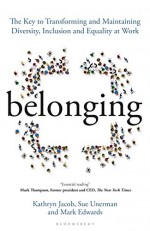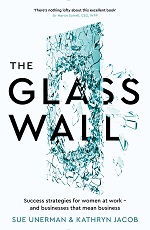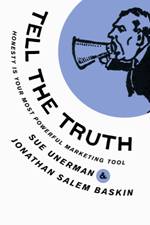There are three factors that make this the moment.
- Inability to rely on modelling as a decision making tool;
- Changes in society and media behaviours;
- New tech.
First modelling.
IPA Effectiveness Awards judging is ongoing. As convenor this year I am all too well aware of how tough the process is, and what a huge amount of work goes into the most rigorous awards standards in the industry worldwide. This year for the first time all papers were read by technical judges not only those with technical appendices. A new and valuable adjustment to the process of proving, beyond reasonable doubt, the effectiveness of advertising (in the broadest sense) on business outcomes.
Many papers use econometrics to help with this proof. Yet as my colleague Greg Newman has pointed out to me, we are currently in interesting times as far as econometrics is concerned. There has been much disruption to normal advertising practices and this will both be very valuable (econometricians like dark periods for contrast) and yet also very useless (in that so much in the supply and retail chain has changed that the models will need a reset.)
Fans of The Black Swan will remember that Taleb was critical of econometrics in times of change. He cited turkeys and Thanksgiving. If a turkey commissioned a lifetime model of what was going to happen in late November based on the previous months of its life then the prediction would be that it would get slightly more food every day, not that it would be cooked for Thanksgiving dinner.
Where there is great emphasis on modelling, there can be less appetite for experimentation.
Factor one then is that when there is less to base predictions on, it can be easier to persuade stakeholders to try out something new. This is already happening in some sectors, for example live music.
The Economist predicts that the current crisis will prove to be “the biggest jolt to live music in decades”. The market value of Live Nation, the world’s largest live-entertainment company, has dropped from $15bn to around $10bn as concerts have been postponed. The writer argues that the current situation however might be a boon in terms of creativity and innovation, (whilst acknowledging that a virtual gig will never replace a live event): Rolling Stone magazine reported that K-pop band BTS made $20m from a virtual gig staged on June 14th; Travis Scott famously reached 27m on Fortnite; and Laura Marling sold many more seats for a live streamed gig than she could have sold at the venue.
So, this brings us to the second factor which is that many more people have learned digital skills and new digital habits. Covid19 has done more to get people to adopt online shopping, entertainment and interaction than any planned campaign or strategy. E-commerce has become normal for all ages and on-demand viewing has grown by 70% year on year.
Factor three is changing technology. 5G will enable more creativity in terms of virtual experience.
These three factors – the fact that we can’t rely on the past to model what is to come; the change in society in attitudes, in digital habits and media behaviours; the impact of 5G – make for a powerful Venn diagram. In the centre is a moment in time, a moment to innovate for brands, for comms, for media. If this isn’t part of your plan then now is the time to think of ideas that haven’t been tried before, about appetite for risk, and to design a plan with elements that look like nothing that has gone before.



There is one aspect of business that the leader cannot delegate
Friday, July 31st, 2020Can’t delegate the culture
We have hurtled into the future of work in the last few months. For many the workplace has ceased to be the office and we have instead participated in a giant pilot of home working.
Some people can’t wait for it to get back to “normal”. Most never want it to go back exactly to that pre-Covid norm. Most of us in fact prefer working at home to being in the office, at least some of the time. Forbes reports that according to Qualtrics, workers are in no rush to return to their old desks. Instead three out of five workers in the U.S., U.K. and Australia, who switched to remote working, say they prefer working from home. Just one in four workers under the age of 55 actually wants to go back to the office.
Of those who are still working from home after the switch, the majority (59%) want to permanently switch to a form of blended work that allows working both in the office and at home.
Companies seem to have responded to this cultural shift. Some 41% of global respondents to the survey said their companies are now giving staff the option to work remotely some of the time.
How do we manage workplace culture if the culture of the workplace is no longer just the office?
Some businesses have regarded the workplace culture as just that. Something that can be controlled and monitored and nourished inside the office. So businesses might paint corporate values on the walls, or in the lifts. They will offer sweets or a banana for snacking. The meeting rooms may contain beanbags to encourage creativity.
Frankly these moves were never enough to deliver a good culture. Whilst a coat of paint and a decent carpet can spruce up atmosphere, unless the emotional culture is right then everything else is masking reality.
Then there’s office rituals. When I started out in media an afternoon ritual was often a game of cricket in the office. This notion of fun was not my notion of fun. This fun ritual made me feel excluded, not included. At least virtual online games are easier to swerve. I only fitted in when I moved to a business that was full of diverse types of people.
As we move to what many think will be a more hybrid office/home working pattern there are new challenges, and new opportunities to get culture right. To make sure that it is inclusive, that everyone has a sense of ownership, shared vision and empowerment.
This is not simple. It is not something that any leader should delegate to the people team, or specialist department. In perhaps every other aspect of the CEO’s job a specialist, experienced, senior expert can deliver strategic advice and actionable tactics. A great CEO will always keep culture as their own deliverable and their own responsibility.
We are in uncharted waters. The social capital that has glued the work place together in our sector has been largely earned through interactions in the workplace together. As we move to a situation where there are new norms the challenges multiply, and so do the opportunities.
Some careers have been built in the past in media and advertising on the golf course or in the pub. This has held back non golfers and light drinkers. Businesses with great cultures have reaped the rewards in terms of diversity of thinking because golf has not been the main path to promotion.
If casual encounters or serendipitous meetings become less likely in the future everyone will need to play a part in creating a positive inclusive culture where talent of every kind is encouraged, led in person by the CEO.
Posted in MediaComment | No Comments »